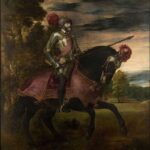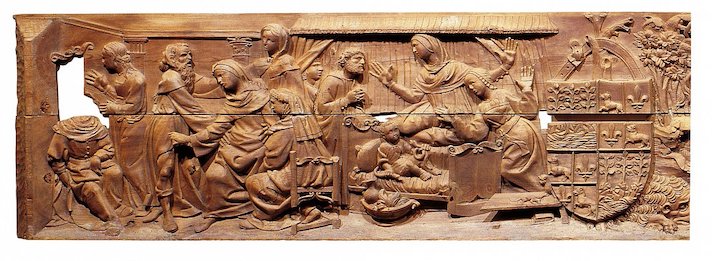
Charles V, Holy Roman Emperor, was portrayed by the Italian artist Titian after his victory over the Smalkada League, led by Protestant nobles. Faced with the religious rebellion that had arisen in the imperial states in the heart of Europe following the reformism proposed by Luther years earlier, Charles V took action to prevent the break-up of one of his territories over politico-religious issues. Although the significance of the emperor’s victory is political in nature, the religious connotation should not be forgotten, in which Catholicism defeats Protestantism. Thus, in the image, Charles shows the Virgin with the child on her breast in a clear allusion to the fact that God is on his side. The meaning of this painting is to show Charles not as a victor, but as an emperor capable of ruling over the different and diverse states and religions that made up the Hispanic Monarchy. Artistically, it is a novel work for the European imagination, as it synthesises the Roman equestrian portraiture begun in the Renaissance period, which would reach its apogee in the second half of the 16th century.
Collection: Images
Project: 5. Power and powers in the history of Europe: oligarchies, political participation and democracy., 6. Under a cloak of terror: violence and armed conflict in Europe.
Chronology: XVI
Scope: Secondary Education, Baccalaureate
Resource type: Image
Format: Oil on canvas (1548); 335 cm x 283 cm
Source: Museo Nacional del Prado
Language: Spanish
Date: 1548
Owner: Álvaro Romero González (Modernalia)
Identifier: P000410
Copyright: Museo Nacional del Prado
Abstract: Portrait of Charles V by Titian in 1548. Museo Nacional del Prado.
Image
Tags






